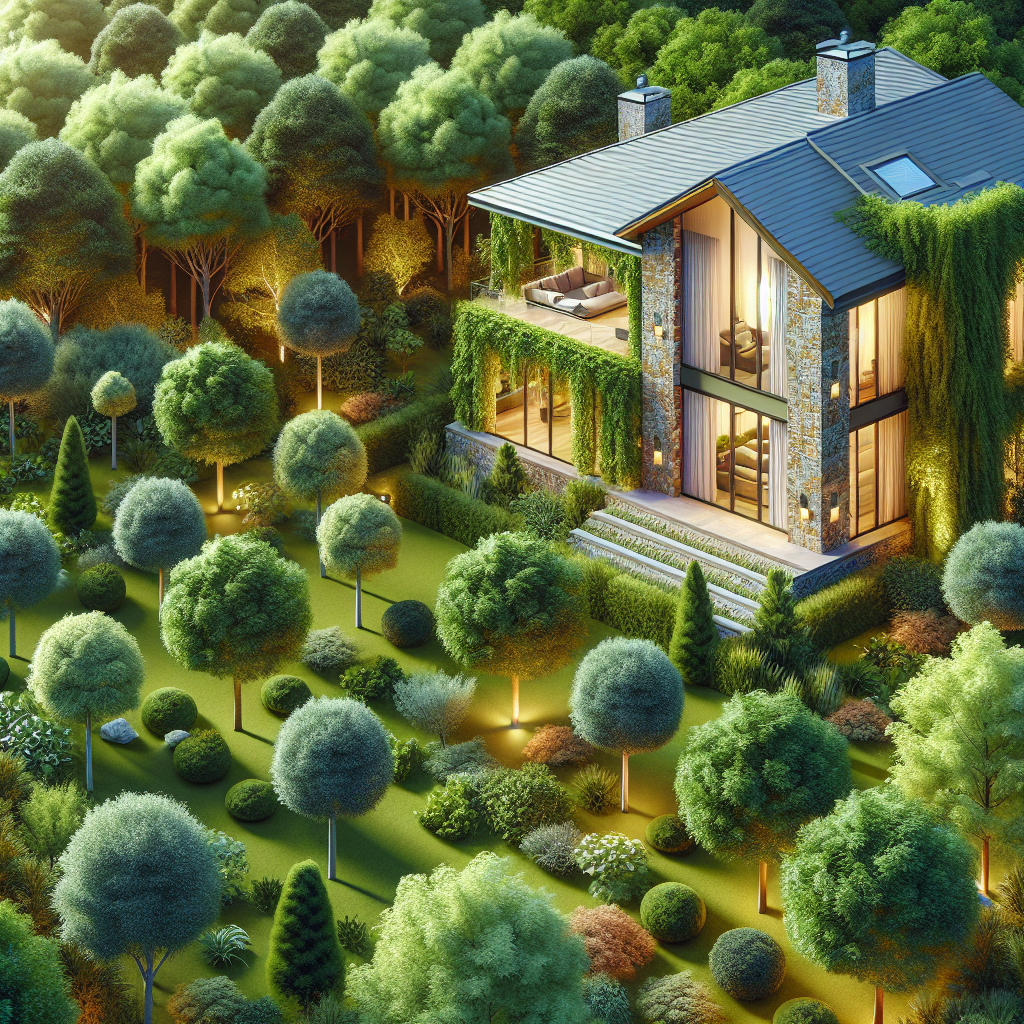In today’s world, energy efficiency isn’t just a trend; it’s a necessity. Homeowners are increasingly searching for sustainable solutions that not only enhance their property’s aesthetic but also reduce energy costs. One of the most effective yet often overlooked methods is smart landscaping. By understanding how to use plants strategically, homeowners can create a lush landscape that helps regulate home temperatures, making it a true ally against soaring utility bills.
The Importance of Energy-Efficient Landscaping
Landscaping goes beyond mere beautification. It plays a significant role in energy conservation. A well-planned garden can lower energy costs by creating natural barriers against wind and sun. According to the U.S. Department of Energy, strategically placed trees and shrubs can reduce heating and cooling costs by 20 to 50%.
Understanding Microclimates
Before diving into planting strategies, it’s crucial to understand the concept of microclimates. A microclimate is a small area within a larger climate zone that has slightly different climate conditions. Factors such as building structures, trees, and water sources can influence local temperature and humidity. By recognizing these variations, homeowners can select the right plants for optimal energy efficiency.
The Right Trees for Shade
Shade Trees
One of the most effective ways to enhance your home’s energy efficiency is by planting shade trees. Deciduous trees, such as oaks and maples, provide lush canopies that block the sun in summer while allowing sunlight through in winter after they shed their leaves. Placing these trees strategically around your home will keep it cooler during hot months and reduce reliance on air conditioning.
Evergreen Trees
On the flip side, evergreen trees like pines and firs can act as windbreaks in colder months, shielding your home from cold winds and reducing heating costs. Planting them on the north and northwest sides can be particularly beneficial.
Shrubs and Hedges: A Buffer Against the Elements
In addition to trees, shrubs and hedges serve as excellent windbreaks and provide an added layer of insulation. Dense shrubbery can prevent cold winds from infiltrating your home, leading to a more comfortable living space. Here are some plants to consider:
- Boxwood: This hardy evergreen is perfect for creating resilient boundaries and reducing wind exposure.
- Holly: Not only does holly offer seasonal beauty, but it also stands strong against harsh weather.
The Role of Ground Cover
Ground cover plants also play a vital role in energy-efficient landscaping. They reduce soil erosion, keep the soil cooler, and require less water than traditional lawns, thus lowering your overall energy and maintenance costs.
Plant Options:
Consider planting varieties like clover, creeping thyme, or native grasses. These plants not only thrive in various climates but also promote biodiversity, providing habitats for beneficial insects and wildlife.
Energy-Efficient Planting Design: Layering and Placement
When it comes to planting, placement is key. Layering plants in an effective manner allows for maximum energy efficiency. Here are some tips to create your energy-efficient landscape:
1. Analyze Your Space
Take note of the sun’s path throughout the day and understand how your house interacts with its surroundings. Identify areas where shade is needed most.
2. Group Similar Plants
Group plants with similar light and water needs together. This not only promotes healthy growth but also conserves water, reducing your energy footprint further.
3. Use Native Plants
Native plants are adapted to your local environment, requiring less water and maintenance than non-native species. They are also more resilient to local pests and diseases. This re-establishes a natural ecological balance, which can lead to a healthier environment and consequently lower energy usage.
Incorporating Hardscaping Elements
While plants are crucial, hardscaping elements like patios and pathways can also contribute to energy efficiency. By using materials that retain heat, such as thermal mass pavers, you can help reduce cooling costs. Incorporating water features like ponds or fountains can lower ambient temperatures in your yard, creating a refreshing microclimate.
Maintenance: The Key to Long-Term Energy Efficiency
Once your landscape is in place, maintaining it is essential for ensuring its ongoing energy-efficient benefits. Regular pruning, mulching, and mindful watering can help create a thriving ecosystem that benefits both you and the environment.
Seasonal Checks
Seasonal check-ups can ensure that your landscaping continues to function as intended. Remove dead plants, assess the health of your trees and shrubs, and adjust your watering routines based on seasonal changes.
Conclusion: A Sustainable Investment
Landscaping for energy efficiency isn’t just about cutting costs; it’s about committing to a sustainable lifestyle that benefits the planet. By embracing smart planting techniques, homeowners can create beautiful outdoor spaces that serve both aesthetic and functional purposes.
In this era of rising utility costs and increasing environmental awareness, a thoughtfully designed landscape becomes more than just a yard—it becomes an oasis of energy efficiency that saves money, fosters biodiversity, and enhances the quality of life for everyone who enjoys it. Plant your seeds for the future today, and watch your home thrive!


